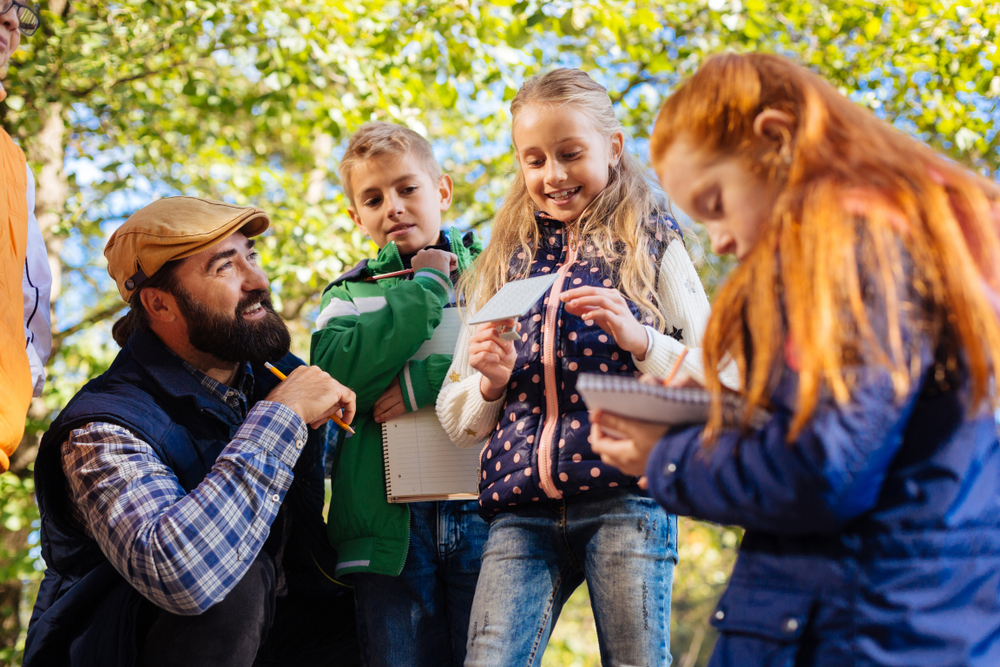Children And The Environment: Why It’s Important To Teach Them Young
Creating worldwide change isn’t done with just one person; it has to involve everyone. In order to involve more people in the efforts to help the environment, it’s important to get younger generations involved in the effort. By fostering a concern for the environment and sustainable habits early, parents can raise children who will be more aware of environmental issues. Though schools will teach a bit about sustainability, the real work starts much earlier at home.
By establishing good habits like recycling at a young age, those habits are more likely to stick with kids as they get older. Younger generations are already becoming more conscious consumers, and instilling environmental values at a young age will help. Encouraging an interest in the outdoors will allow them to appreciate what they love about the environment. Children are our future, so it’s important to teach them about environmental issues so they can continue to help create change together.
Establishing Good Habits
It’s a lot easier to establish a habit in children than to teach them a new habit as they get older. Though some green living habits won’t come into play until a child gets older, there are plenty of habits for them to learn and witness in their parents. Teach them about recycling and which items go into which bin. Teach them about littering, keeping lights off, and turning off the water when they brush their teeth. If you use reusable bags to grocery shop, they will interpret that as the normal way of shopping and are more likely to do the same as an adult.
In your child’s early years, try to focus on social-emotional learning in order to help them adopt a conscientious mindset. In the words of childcare experts at Kindercare, “The vast majority of brain development happens between the ages of zero to three — the perfect time for children to build the positive social-emotional skills they’ll need.” During these formative years, focus on teaching them foundational skills required for critical thinking, social interactions, and creativity. Later in life, these skills will enable them to analyze environmental issues, communicate those ideas to peers, and ultimately find solutions.
There are also plenty of online tools that can help to explain some of the more complex ideas behind environmental issues as your child gets older. As they age and ask more questions about the habits you teach them, these tools can help answer some of their questions in a way that your children can understand.
Raising Environmentally Conscious Consumers
Becoming environmentally conscious from a consumer standpoint was something learned for many adults. For older generations, paying attention to your own role as a consumer and how that affects the environment wasn’t something many people thought about. However, parents today can change that for their children. This means focusing on recycled items, buying sustainably sourced food, finding energy-efficient appliances, and using biodegradable cleaning products. Even a few sustainable choices make a huge impact, and children tend to emulate these purchasing decisions as adults.
Being an environmentally conscious consumer is more than what you purchase; it’s who you purchase from. The evolution of sustainability from government initiatives to social change and corporate leaders making sustainable products has been happening for decades. However, many companies still operate without the environment in mind. Teaching your children about researching their purchases and giving their money to companies that value environmental issues will help them to continue that practice as they get older.
Encouraging an Interest in the Outdoors
It’s easier for people to care about an issue if it hits close to home for them. An emotional investment in an issue is hard to break, which is why encouraging an interest in the outdoors can be helpful for your child’s future interest in environmental issues. Lead by example and provide them with activities. Take them on walks, hikes, and outings to the lake or ocean. Allow them to climb trees, look at bugs, and admire wildlife. Encourage their interest and questions and foster their appreciation. By providing them with more outdoor experiences, they will begin to associate their environment with interest and happiness.
Not only will a love for the outdoors help them to have an emotional connection to environmental issues, it’ll also help them to be even more sustainable. They may be more interested in walking or biking instead of driving as they get older. They may adopt more outdoor hobbies like gardening. Not only that, but the outdoors encourage us to move more and stay healthier overall.
Children Are the Future
Each generation needs to be better than the last. Children need to learn how to protect their environment, be kind to each other, and make decisions that benefit the world as a whole. Environmental education and conservancy has been a public virtue since the 19th century, but in recent decades it’s been a hotly debated topic tied to political interest and financial gain instead of science. Because of this, it’s even more important to teach children about the environment and sustainability at home. Without action, the environment will suffer — and each generation along with it.
No one needs to be perfect in order to teach children about the environment. Each small, sustainable change makes an impact. It’s one fewer piece of plastic in a landfill, one fewer marine animal in peril, or one fewer dollar spent on oil. Teaching children that they can make a difference will help to raise a generation of adults who are more aware and environmentally conscious than the generation before them.
It’s important to teach your children about the environment at an early age because these teachings will become their normal. The environmental habits they learn, the environmentally conscious consumer choices they see, and the time they spend learning to love and appreciate the outdoors will shape them into the future of environmental sustainability.

